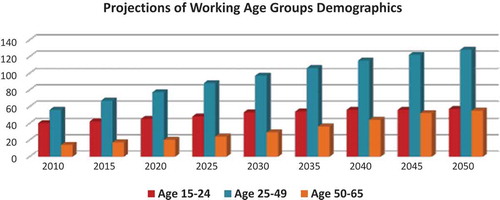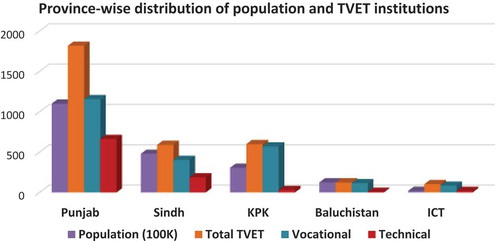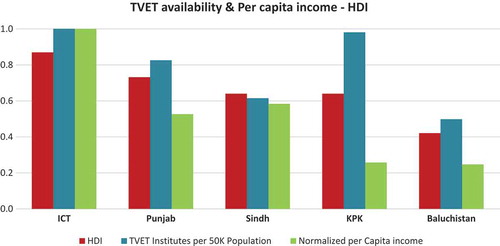ABSTRACT
Pakistan is among the emerging economies of South Asia. Despite the current progress and ambitious future goals set by the government, the nation faces many challenges, foremost being poverty and unemployment. Pakistan a nation of 210 million people with 60% of the population under 30 years of age, has a dire need for training its burgeoning young population and provide them the skills needed for their useful and gainful employment. This paper gives a critical analysis of the current technical education status in Pakistan and the upgradations needed for absorbing the emerging technologies and possible avenues for skill development for the nation so that it can welcome and embrace the new technologies and take maximum benefit from the rapidly changing skill requirement scenario. Prioritizing the development of efficient TVET processes in the area of renewable energy and microgrids for establishing new smart off-grid communities and smart economic zones is emphasized.
Introduction
The world has been facing existential threats from the day Earth came into being; however, today it is facing a much larger array of such threats. The new threats have arisen due to human interference with Earth’s ecological systems. Human interventions have resulted in threats resulting from technological advances, climate change, and ecological imbalance and diminishing resources (energy, water, and food, etc.). This has given rise to debate on the role of various affecters and affected, both human and non-human. Among the affecters, new technologies and the energy sector are the most prominent, generating pollutants such as the Greenhouse Gases (GHG), which are the main catalyst for the climate change being witnessed in the 21st Century.
To overcome these challenges, steps need to be taken in all fields related to the economy and job creation. Energy is considered to be the lifeline of the progress, prosperity, and industry of a country. As far as Pakistan is concerned, currently the main electric energy distribution system is national-grid centric. Although renewable energy sources such as photovoltaic (PV) cells are in use, so far their proliferation has been minimal. To cater for energy deprivation, especially of the poor off-grid population living in remote areas with accessibility problems, the use of renewable energy sources using microgrids and developing smart standalone communities is an immediate requirement and fast becoming a necessity. Due to the emerging smart and sustainable communities’ concept and the development of smart energy and smart microgrid technology, a gigantic boom in the application of these new technologies is expected (Calvillo, Sánchez-Miralles, & Villar, Citation2016). However, there is a large deficiency in public awareness as well as the expertise and skills required to support the easy and free proliferation of this technology to those who require it most. This paper provides a critical analysis of the status of current technological training and possible avenues for skill development for the nation so that it can welcome and embrace the new technologies and take maximum benefit from the rapidly changing skills requirement scenario.
Sustainable Development Goal Number 7 commits to developing ‘access to affordable, reliable, sustainable, and modern energy for all’ and has far-reaching effects as it is a precursor to meeting other Goals such as facilitating access to employment (Goal 8) and providing education for all (Goal 4).
The British Petroleum (Citation2018) Statistical Review of World Energy highlights key trends in world energy consumption. This indicates that the developed world produces more than 58% of its energy needs from fossil foils. In spite of this, there is an ever-increasing pressure on the under-developed world populations to not, invest in currently cheaper fossil fuel based energy sources but to invest in more capital-intensive renewable energy sources. This puts the under-developed world at a double disadvantage. Renewable energy sources are currently not only more expensive to harness for the under-developed world but they also lack the manpower with the required skills to be able to manage renewable energy plants. As a consequence, they have experienced a high failure-rate in installing and operating renewable energy plants. The current paper addresses this contradictory situation, especially, in the context of Pakistan.
Global situation
The fourth Industrial revolution is here. However, it seems that most societies across the globe are not prepared for it socially. Most find this concept worrying (Lytras & Visvizi, Citation2018) although the transformation of the urban landscape with new technologies is not a novel idea. The co-evolution of cities and technology was set in motion centuries ago. In the eighteenth and the nineteenth century, we witnessed the Industrial Revolution and a rapidly changing world where cars, elevators and telephones demanded a transformation in urban form. Not only cities but citizens themselves underwent a profound transformation arising from this. The employment market was similarly affected by the impacts of technological change. The automation of work, brought about by the Industrial Revolution, forever altered the global economy and the employment market. Transformations in work responsibilities and labor markets were also met with the great fear that technological change would result in mass unemployment. However, more employment opportunities and markets opened after an initial adjustment period, and the world experienced exponential economic growth which resulted in major employment opportunities, better work conditions and wages. Stephens and Roderick (Citation1983) state that, ‘the Industrial Revolution was the reason for the interest in scientific and technical education’ (p. 17). The first Industrial Revolution, directly and indirectly, benefitted a great deal from the Mechanics’ Institute and the Lyceum Movements, which can be considered as precursor to TVET. These started as adult education institutes providing alternative education and imparting technical skills as well as producing ‘more effective workmen and more law-abiding citizens’. Currently, humanity is undergoing an analogous change as post-industrial cities develop into information and data-driven cities. With cities around the world installing digital sensors into architecture and telecommunications, prevailing infrastructure systems are turning into multifunctional platforms for data and services (Albino, Berardi, & Dangelico, Citation2015). These digital systems often engineer the urban environment with minimal human involvement.
Examples include: managing traffic flow and street lighting systems, public dashboards, supply networks, security and surveillance, etc. The city is now a place where people are rarely able to think or act alone, as diverse kinds of capabilities in computer-intelligence, portable devices, navigation systems, computer simulations and software database perform several of human tasks autonomously (Chamoso, González-Briones, Rodríguez, & Corchado, Citation2018). The urban fabric supported by these intelligent technologies is capable of remembering, correlating and foreshadowing. Such changes are also leading to the strong possibility that most low-skills job will become obsolete, especially with the proliferation of robotics and artificial intelligence. In this frenetic pace of digitalization, there is ever-increasing privatization of large-scale data ecosystems. When combined with technologies such as machine-learning, these large-scale data ecosystems are likely to have an even more profound effect on the future of urban services and job markets. The increased demand for intelligent urban solutions is calculated to be driven by factors such as the growth of the urban population, the need to improve the management of limited natural resources and the focus on environmental sustainability. To provide cities with sufficient energy, without disrupting the eco-system, renewable energy in combination with local microgrids, seems to be a feasible and sustainable option (Battista, Evangelisti, Guattari, Basilicata, & De Lieto Vollaro, Citation2014; Gyamera & Atripatri, Citation2017; Papa, Gargiulo, & Zucaro, Citation2014; Vrins, Woods, & Volkerts, Citation2015).
According to Grand View Research Inc. (Citation2018) by the year 2025, the worldwide smart cities market is expected to reach USD 2.57 trillion. City data, when assembled, can create constructs that directly impact urban life and implement new types of services. These services widely encompass proficient mobility and healthcare, smart buildings and houses, optimum energy consumption, security, and improved administrative services. Future job markets will be closely linked with these trends. There is a huge employment market in the rising smart city industry although the downside is that the technology deployed is usually restricted to private platforms that are basically ‘black boxes’ that cities attain through licensing agreements designed to create technological dependencies. Governments and businesses, however, can help to launch innovative ecosystems by offering open access to data, platforms for training programs, easy access to application programming interfaces and service markets. In view of the volume of data that these infrastructures generate on a city scale, techniques that use different forms of artificial intelligence and machine learning will become more critical elements in the production of beneficial applications. Currently, machine learning technologies are creating a revolution in several industries and have an extensive range of application from media and finance to biotechnology. The wide array of future jobs will include the likes of machine learning and data scientists, cybersecurity analysts, autonomous driving scientists, energy efficiency engineers, and urban informatics analysts. This comprehensive scenario for job changes is detailed by Manyika et al. (Citation2017) in a McKinsey Global Institute report. It has been estimated that around 400 million jobs would be lost to automation, while 75–375 million workers will need major re-training to maintain their jobs. However, there will also be substantial job growth in non-traditional work areas. If leveraged properly, this job growth may offset the jobs lost, to a major extent.
Situation in Pakistan
The Pakistan Bureau of Statistics (Citation2017) puts Pakistan’s population as the sixth largest in the world, at around 210 million. The Population Reference Bureau (Citation2018) states that 33% of Pakistan’s population is aged less than 15 years, nearly 63% is of working age (between 15 and 65 years old), while only 4% of Pakistanis are older than 65 years of age. By the year 2050, Pakistan’s population will exceed 310 million and out of those, more than 67% will be of working age. These statistics show the enormous skill development needs of Pakistan. shows Ministry of Planning Development and Reform, projections of change in working-age demographics of Pakistan.
With above statistics in mind, the two issues of (i) meeting the energy needs of urban and smart communities moving towards Industry 4.0 with existing and new/renewable energy resources and (ii) the development of required skill sets for the working population to deal with the immense challenges posed by the advent of new technologies, need to be addressed urgently. To manage this challenge, even at the minimum level, a study of the presently available technologies in Pakistan and available skill-level is required. The current TVET institutions coverage in Pakistan is shown in .
Dr. Mahbub ul Haq of Pakistan led the production of the first Human Development Report in 1990, which was later developed by the UNDP in form of the Human Development Index (HDI) Report. If a comparison of the 2017 HDI Report for Pakistan (Najam & Bari, Citation2017) with the Provincial TVET institution density per million population and the per capita income is made (), a relationship between the availability of TecTVET, per capita income, and the HDI is visible. This relationship is not linear, though, a correlation is visible. This indicates that TVET access can have a positive effect on the human condition. In case of the provinces of KPK and Baluchistan there seems to be an anomaly. However, if the data in is considered in conjunction with , this could be explained by the fact that TVET institutions in these regions are more focused on producing medium to low skilled non-technical manpower. This is also reflected in the low per capita income in these regions.
Status of energy technology and related skillsets
Pakistan’s current energy-mix is based mainly on three pre-twenty-first century technologies: thermal (fossil fuel), hydroelectric and nuclear power. Pakistan however, lacks the design and manufacturing capability and skills to utilize these efficiently, despite the development of reasonable skill levels in the installation and maintenance of these types of power plants. In reality, the skill level remains rudimentary and proper training facilities are very limited, especially in relation to international standards and safety issues. The level of renewable energy use, other than large hydroelectricity plants, is negligible with less than 1% coming from wind and solar power (cf. an average renewable energy utilization globally of 3.4% and more than 8% in Europe). Pakistan’s main challenge in harnessing renewables is the non-availability of required skillsets and an extreme shortage of institutions capable of providing relevant training in renewable energy.
Over the last five years (2013–2018), significant efforts have been made to reform TVET process in Pakistan (Khan & Pathan, Citation2016; Paulo & Kottmann, Citation2015; Shah & Muhammad, Citation2017). However, serious concerns remain, especially as a sizeable proportion of Pakistan’s foreign exchange income is based on the remittances by the manpower exported to the Middle East (Bruns, Khan, & Emaan, Citation2018). This revenue stream can be increased by sending certified skilled labor to these countries rather than the current predominantly unskilled labor. However, industry’s response to TVET in Pakistan has often been ‘lukewarm’ with many industry representatives believing that most of current TVET graduates were ‘not worth hiring’. One reason for this may be the lowsocial status accorded to TVET in Pakistan. This is a result of the very negative perception of blue-collar jobs in Pakistan. Under this misconception, even many parents from very poor families prefer to send their children to universities, at a very high economic cost, rather than sending them to TVET institutes. This results in less interested and motivated students and teachers in the sector. The government of Pakistan has announced a revamped TVET policy (Ministry of Federal Education and Professional Training, Citation2017) but it is too early for result to be seen. One option which may provide impetus to better quality TVET in Pakistan is a merger of TVET institutions with universities. This may help in improving the quality of training if processes similar to those being implemented in universities are also adopted for TVET. Such mergers may also help in mitigating the negative perception that TVET carries. Such a reform would be costly and time-consuming. However, historical trends of the last several decades show that the huge amounts invested in TVET have produced little qualitative improvement thus far. It is, therefore, possible that funding the merger of TVET institutions with well-established universities and supporting the students through scholarships may provide a better return-on-investment in terms of human development outcomes.
TVET in Pakistan is mainly focused on three areas: construction, mechanical, and electrical technologies. However, the curricula remain archaic and the quality of training is far from desired. The two main reasons for this are the lack of new equipment and the low quality of teaching staff of most TVET institutions. One exception seems to be the Bachelor of Engineering Technology courses recently introduced by the National University of Technology. If this initiative proves successful, it could become a model for future initiatives. However, at the moment, it is geared towards producing a limited number of high-skilled managers and supervisors. This will need to be expanded to include a large number of the high-skilled workforce at all levels.
The future scenario
To uptake this daunting task, the first step is to identify the skills required for the near future. With a focus on SDG-7: ‘access to affordable, reliable, sustainable, and modern energy for all’ and SDG-11: ‘Sustainable Cities and Communities’, it is important, to define and analyse their implications. Within the concept of smart cities and communities, urban policy and planning is looking towards self-sufficient, self-governing communities that encompass smart urbanism, smart governance, smart economy, smart energy, smart technologies for mobility, education, health, social services, and citizen empowerment, etc. (see Ahvenniemi, Huovila, Pinto-Seppä, & Airaksinen, Citation2017; Cocchia, Citation2014; Gudes Kendall, Yigicanlar, Pathak & Baum, Citation2010; Lara, Costa, Furlani, & Yigitcanlar, Citation2016). Some could argue that such a futuristic scenario is utopian, but the fact is that humanity has to apply new technologies to plan for a more sustainable way of living. However, technology is a sharp two-edged sword. Technology needs to be used in the best possible (utopian) manner rather than the current disruptive (dystopian) manner if humanity is to survive the next few centuries.
Skills for the future
In this emerging scenario, important skills will be linked with deployment and management of large Artificial Intelligence (AI) systems based on ever-present connectivity, including the Internet, the Internet of Things (IoT), the Industrial Internet of Things (IIoT), etc. These AI systems will manage the availability and utilization of services such as energy, agriculture, transport, education, economy, finance, trading, etc. With most of the menial work related to these fields becoming automated, many current basic skillsets will become redundant. For example, in not too far a future, the proliferation of automated, self-driving automobiles, could make the driving profession obsolete while robots and automated manufacturing technologies, such as 3D/4D printing, could make basic manufacturing skills redundant. Similarly, transport management could become completely automated, thereby making operators and managers redundant. In the energy sector, all jobs linked with manual metering, line inspections, billing, complaint logging, load management, etc. could soon vanish while the need for human inspectors could disappear, with most of monitoring, control and diagnostic work being performed by intelligent computer systems using advanced sensor systems and IIoT technology.
However, a middle ground is possible where humans develop or master skills in areas which the computers and machines may not be able to perform well, at least not in the immediate future or the next few decades. It is among such drastic and disruptive technological advancement that new skill sets will need to be defined.
Future skills development requirement for Pakistan
There are still several well-demarcated areas where, for the near future, human labour will still be more efficient, reliable or cheaper than the automatons, especially for countries like Pakistan. Developing countries possess abundant and cheap manpower, which can make the introduction of too much automation uneconomical. As the concepts of smart cities, smart industry (Industry 4.0), smart agriculture and smart energy, etc. spread into Pakistan, the requirement for smart manpower will increase rapidly. Jobs will move from current unskilled or low-skilled labor to manpower, highly skilled in smart technologies. Some of these areas which constitute a large portion of Pakistan’s economy and hence, the job market, are mentioned below.
Agriculture in Pakistan
Being predominantly an agrarian society, Pakistan’s agriculture contributes more than 21% to national GDP and remains the backbone of Pakistan’s economy. Many of Pakistan’s industry, including textile, leather, and sugar, are highly dependent on agricultural products for raw materials. Up to 60% of Pakistan’s population is directly or indirectly dependent on agriculture for their livelihood. However, the agricultural yield of Pakistan is less than many other countries that rely on technology. Workers in Pakistan agriculture have not been trained or exposed to new technologies at all. To be able to raise agricultural yields close to the international level, Pakistan needs to invest in and embrace the intensive technical training of the huge part of the population who need to be employed in smart, or at least ‘smarter agriculture’.
Construction in Pakistan
The construction industry is another major contributor to Pakistan’s GDP. In this area as well, most of the manpower employed has little formal training. This leads to a poor standard of quality in construction, plumbing, electric wiring, etc. and poor safety standards. As a result, construction costs are higher and the quality poorer than it needs to be. Therefore, this is an area again where high-quality TVET can prove to be greatly productive.
Renewable energy in Pakistan
There are several other areas of transport, waste management, etc. where similar situations exist. However, the most basic area, which actually drives all the rest and thus needs to be highlighted, is that of energy. As mentioned earlier, Pakistan’s current energy-mix is not very sustainable as it is highly dependent on fossil fuel fired thermal energy plants. These use expensive imported fossil fuels and are, therefore, neither economically feasible nor ecologically viable. Another, issue with Pakistan’s energy generation is its dependence on large scale power plants. Though there is an economy in scales, as far as the generation cost is concerned for any particular power plant, the problem arises with distribution and transmission part. Transmission costs soar as distance increases. As a result, and as shows a large portion of the country remains off-grid and there is no or low access to electricity in many areas. Indeed, the National Grid mainly covers large cities and industrial hubs only.
Figure 4. The layout of the national power grid in relation to the energy resources distribution in Pakistan.
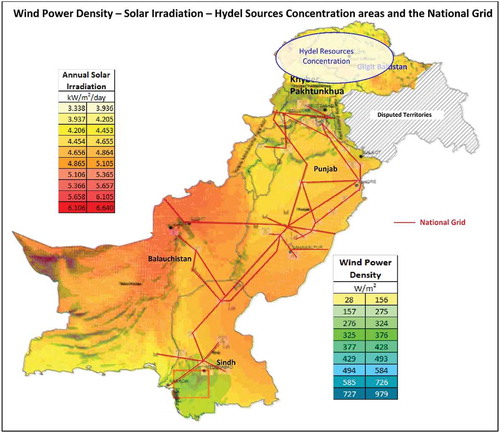
Ironically, also shows that the majority of high-density zones for renewable energy in Pakistan lie in off-grid areas. This is a challenge and yet a blessing as well. This presents an opportunity that can be harnessed to provide several significant advantages. If these abundant renewable energy resources are utilized, a large amount of eco-friendly and low-cost energy can be made available in remote off-grid areas. The availability of energy, in turn, will make economic development in these areas viable, especially as many of these areas have great potential mineral and/or agricultural natural resources waiting to be utilized. Such development could stem the internal migration of youth from remote areas to larger cities in search of economic opportunities. These advantages make it very worthwhile to invest in training local manpower for installing and maintaining renewable energy electricity plants and microgrids for their regions. Depending on the type of renewable energy resource available in each region, TVET training for installing and maintaining microgrids, solar-PV/solar-thermal plants, wind turbines or micro-hydel turbines needs to be made available to local people. Providing TVET in the required specialized skills for people in these remote areas may be problematic as in some cases, many lack basic learning skills. To make this effort successful, immediate efforts are required to mature the TVET syllabus as well as embed the training with modern learning tools to make it easier for the populace to attain the required skills without too much difficulty.
Conclusions
Sustainability has become a major concern for mankind in light of the climate-change and eco-system disruption in the last few decades. At the same time, the development of new technologies has made the advent of smart infrastructure, robots and artificial intelligence an inevitable outcome. As these new technologies and automation takes away most of the unskilled and low-skill jobs from the humans, a dire need for re-training and re-aligning human aptitudes has arisen. In Pakistan, the area of renewable energy in combination with smart microgrids, smart agriculture, and construction-related technical trades are a major area in which TVET can play a positive role. Proper technical training and knowledge enhancement in these areas can not only help in transitioning to new jobs but can also help increase both individual income and national GDP. The use of abundantly available renewable energy resources along with the installation of microgrids in remote off-grid regions can be a catalyst for the economic growth of remote areas. The economic growth of such off-grid areas can also result in developing and expanding new smart communities in these regions, and stem the immigration of youth from these areas, to the already over-crowded existing major urban communities.
Disclosure statement
No potential conflict of interest was reported by the authors.
Additional information
Notes on contributors
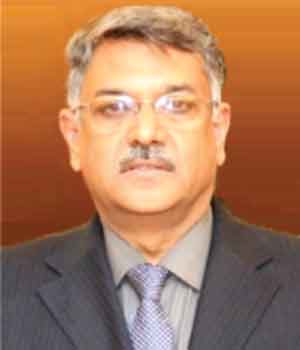
S. R. Sheikh
Dr. Shakil R. Sheikh currently teaches at the Department of Mechatronics, Air University, Islamabad, Pakistan. He completed his Master’s degree from University of Texas at Austin, USA and his Ph.D. from Beijing University of Aeronautics and Astronautics, China. His current research is centered on Energy and Sustainability, including areas of Thermofluids, Smart Energy Systems and Energy Conservation. He has wide experience in Research & Development, Academia and Higher Education Management.

H. Sheikh
Hira Sheikh is currently interning at United Nations Development Programme (UNDP) Policy Development Unit, as an urban planning consultant. She completed her Bachelors in Architecture and Design from COMSATS Institute for Information Technology, Islamabad, Pakistan. She obtained her Research Masters in Media, Art and Performance Studies from Utrecht University, Netherlands with a focus on urban interfaces and use of smart technologies in cities. She was a recipient of the Utrecht Excellence Scholarship. She has worked as a teaching assistant at the School of Art Design And Architecture at National University of Science and Technology, Islamabad, Pakistan. She also remains a free-lance architect. As a researcher, she focuses on urban sustainability in smart cities.
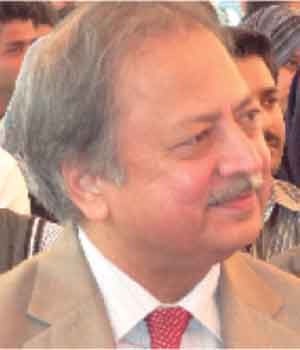
Z. U. Koreshi
Dr. Zafar ullah Koreshi is currently a Professor at Air University, Islamabad. His educational qualifications include B.Sc. (Hons), Nuc. Engg. (Queen Mary College, University of London, U.K), M.S., Nuc. Engg. (University of Wisconsin, Madison, U.S.A), Ph.D. Nuc. Engg. (University of Cambridge, Cambridge U.K). His research work has been in Monte Carlo simulation for neutron transport with applications in nuclear systems, in the mechanical engineering area, his interest lies in process simulation with applications in solar thermal energy storage for small power plants, and more recently in the optimal control of mobile robots. He has extensive experience in Academia including various senior administrative positions.
References
- Ahvenniemi, H., Huovila, A., Pinto-Seppä, I., & Airaksinen, M. (2017). What are the differences between sustainable and smart cities? Cities, 60, 234–245.
- Albino, V., Berardi, U., & Dangelico, R. M. (2015). Smart cities: Definitions, dimensions, performance, and initiatives. Journal of Urban Technology, 22(1), 3–21.
- Battista, G., Evangelisti, L., Guattari, C., Basilicata, C., & De Lieto Vollaro, R. (2014). Buildings energy efficiency: Interventions analysis under a smart cities approach. Sustainability, 6, 4694–4705.
- British Petroleum. (2018). BP statistical review of world energy 2018 (67th ed.). UK: Author. Retrieved from https://www.bp.com/content/dam/bp/en/corporate/pdf/energy-economics/statistical-review/bp-stats-review-2018-full-report.pdf
- Bruns, H. L., Khan, M. I., & Emaan, S. (2018, May). Industry engagement in TVET for growth and employability. proceedings of the international TVET conference Pakistan. Retrieved from http://tvetreform.org.pk/wp-content/uploads/2018/06/Report-of-2nd-International-TVET-Conference-Islamabad-Single-Pager.pdf
- Calvillo, C. F., Sánchez-Miralles, A., & Villar, J. (2016). Energy management and planning in smart cities. Renewable and Sustainable Energy Reviews, 55, 273–287.
- Chamoso, P., González-Briones, A., Rodríguez, S., & Corchado, J. M. (2018). Tendencies of technologies and platforms in smart cities: A state-of-the-art review. Wireless Communications and Mobile Computing, 2018, 1–17.
- Cocchia, A. (2014). Smart and digital city: A systematic literature review. In R. Dameri & C. Rosenthal-Sabroux (Eds.), Smart city. Progress in IS (pp. 13–43). Cham: Springer.
- Grand View Research Inc. (2018, February). Global smart cities market [Press release]. Retrieved from https://www.grandviewresearch.com/press-release/global-smart-cities-market
- Gudes, O., Kendall, E., Yigitcanlar, T., Pathak, V., & Baum, S. (2010). Rethinking health planning: A framework for organising information to underpin collaborative health planning. Health Information Management Journal, 39(2), 18–29.
- Gyamera, L., & Atripatri, I. (2017). Energy efficiency of smart cities: An analysis of the literature. MWI, FH Tecknikum-Wien. Retrieved from https://www.researchgate.net/publication/317583145_Energy_Efficiency_of_Smart_Cities_An_Analysis_of_the_Literature
- Khan, M. A., & Pathan, A. (2016). Technical & vocational education & training (TVET) reform in Pakistan, 2011–2016. Bonn, Germany: Deutsche Gesellschaft für, Internationale Zusammenarbeit (GIZ) GmbH.
- Lara, A., Costa, E., Furlani, T., & Yigitcanlar, T. (2016). Smartness that matters: Comprehensive and human-centered characterisation of smart cities. Journal of Open Innovation, 2(8), 1–13.
- Lytras, M. D., & Visvizi, A. (2018). Who uses smart city services and what to make of it: Toward interdisciplinary smart cities research. Sustainability, 10(6), 1998.
- Manyika, J., Lund, S., Chui, M., Bughin, J., Woetzel, J., Batra, P., & Sanghvi, S. (2017, December). Jobs lost, jobs gained: Workforce transitions in a time of automation. McKinsey Global Institute. Retrieved from https://www.mckinsey.com/featured-insights/future-of-work/jobs-lost-jobs-gained-what-the-future-of-work-will-mean-for-jobs-skills-and-wages
- Ministry of Federal Education and Professional Training, Government of Pakistan. (2017). Skills for growth & development: A Technical and Vocational Education and Training (TVET) policy for Pakistan. Retrevied from http://www.navttc.org/downloads/policies/NTP2018.pdf
- Najam, A., & Bari, F. (2017). Pakistan national human development report 2017: Unleashing the potential of a young Pakistan. Pakistan: United Nations Development Programme. Retrieved from http://www.pk.undp.org/content/dam/pakistan/docs/HDR/PK-NHDR.pdf
- Pakistan Bureau of Statistics. (2017). Province wise provisional results of census – 2017. Retrieved from http://www.pbs.gov.pk/sites/default/files/PAKISTAN%20TEHSIL%20WISE%20FOR%20WEB%20CENSUS_2017.pdf.
- Papa, R., Gargiulo, C., & Zucaro, F. (2014). Urban systems and energy consumptions: A critical approach. TeMA: Journal of Land Use, Mobility and Environment, 783–792. Retrieved from http://www.tema.unina.it/index.php/tema/article/view/2552
- Paulo, M., & Kottmann, I. (2015). Cooperative vocational training an innovative approach towards skill development [Handbook]. Version 1.1. Deutsche Gesellschaft für, Internationale Zusammenarbeit (GIZ) GmbH. Retrieved from http://tvetreform.org.pk/wp-content/uploads/downloads/cvt_handbook//CVT%20Handbook%20(Version%201.1).pdf
- Population Reference Bureau. 2018. 2018 world population data sheet, with a special focus on changing age structures. Washington, DC: Author. Retrieved from https://www.prb.org/wp-content/uploads/2018/08/2018_WPDS.pdf
- Shah, S. A., & Muhammad, N. (2017). Comparative analysis of TVET sector in Pakistan [Report]. Islamabad, Pakistan: National Vocational & Technical Training Commission. Retrieved form http://www.skillingpakistan.org/files/1/Comparative%20Analysis%20of%20TVET%20Sector%20in%20Pakistan.pdf
- Stephens, M. D., & Roderick, G. W. (1983). The role of scientific and technical education in early industrialisation in America and England. The Vocational Aspect of Education, 35(90), 17–22.
- Vrins, J., Woods, E., & Volkerts, M. (2015, July 15). Smart cities, energy transformation: Opportunities and challenges for utilities (pp. 28–31). Public Utilities Fortnightly 2.0. Retrieved from https://www.fortnightly.com/fortnightly/2017/06-0/smart-cities-energy-transformation

